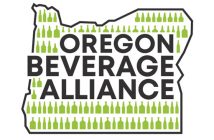Operating a small business carries a host of responsibilities with it and that includes the legal responsibility of providing a safe environment for your customers. When a customer falls and becomes injured on your property, they may contact a Tampa personal injury attorney to file a lawsuit. Typically, this falls under the category of a premises liability claim, but only when the injured party can prove you were negligent.
The Factors That Determine a Legitimate Slip and Fall Claim
While filing a premises liability claim is a straightforward process for injured parties, it’s also set up to ensure that the business owner’s rights are equally protected. Just because an individual becomes injured on your property that doesn’t mean you’re at fault. In fact, a successful claim must meet each of the following four conditions.
Duty of Care
The injured party, or plaintiff in a lawsuit, must be able to prove that you had a duty of care. This simply means showing that it was your legal responsibility to take reasonable actions to ensure the customer’s safety. This may mean making sure the floor is clear of hazards or there are no low-hanging items that could cause injuries. While you may have a duty of care in public areas, a plaintiff wandering into an area that is clearly marked private may not be able to prove that same duty of care.
Breaching the Duty of Care
The second step is for the plaintiff to prove that you or your employees breached the duty of care. This requires showing negligence by either acting or failing to act to cause the conditions that made the area unsafe. For instance, a plaintiff may show that your employees knew about a spill on the floor that created a fall hazard. If no one acted to clean the spill or made an effort to warn customers of the danger, this may be enough to prove negligence.
Negligence Caused Injuries
The plaintiff must also show that the danger resulted in their accident. A slip and fall accident may result in broken bones, spine injuries, or head trauma, depending on the severity of the fall. In this case, medical records and testimony from healthcare providers can provide proof that the individual’s injuries were caused by the accident.
Causing a Financial Burden
Finally, the injured party must be able to show that the accident caused them financial losses. In addition to medical care costs, this may include time lost from work, an inability to return to their profession, pain and suffering, and other costs. Since the goal is to obtain financial compensation for these losses, it’s important that the plaintiff be able to prove their financial losses.
Diligence Can Help You Avoid a Lawsuit
The best way to avoid a lawsuit is to be proactive in making your business safe for others. Your customers will not have cause to consult a Tampa personal injury attorney, if you ensure your place of business is free of hazards. You can do this by frequently inspecting all areas of the business for dangerous situations. This may include potholes in the parking lot, as well as hazards inside the store.
When you do spot a potential safety hazard, you should act to correct the situation immediately. If it can’t be repaired without professional help, the area should be cordoned off and marked as unsafe until a skilled contractor arrives. In any case, be sure to supervise the work, if you’re not doing it yourself.
By establishing set policies for dealing with hazards, you can ensure your employees know how to correct safety issues. When your staff is educated and encouraged to address safety concerns, you will be better able to avoid customer accidents as well as workplace safety incidents. The key is to anticipate dangers and address them, before they cause an accident that could result in a premises liability claim.




